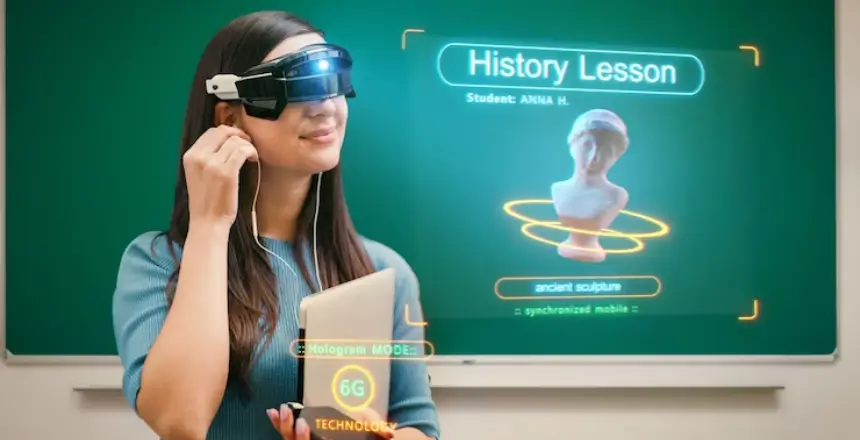Educational technology, often referred to as “EdTech,” combines innovative software, hardware, and processes to facilitate learning and improve performance. A force that is reshaping classrooms worldwide, EdTech is not merely about digitizing books and training materials.
It encompasses virtual classrooms, digital collaboration tools, machine learning algorithms, and bespoke learning platforms designed to engage students, enhance accessibility, and personalize learning experiences. Having passed the stage of “emerging markets,” EdTech is now a global industry, and its growth rate continues to accelerate.
Advancements in Educational Technology
The advancements in educational technology have brought about significant changes in traditional learning environments. With the advent of digital classrooms, students can access relevant content anytime, anywhere.
The increasing popularity of virtual learning tools has also opened up new possibilities for students, such as flexible and personalized learning experiences.
One of the biggest trends in educational technology is the use of artificial intelligence (AI). AI-powered tools can analyze student data to identify areas where they may need extra help and adapt learning materials accordingly.
This not only helps students achieve better academic outcomes but also frees up teachers’ time to focus on more valuable tasks, such as one-on-one instruction and student support.
Gamification in Education
Another remarkable trend in EdTech is the incorporation of gamification strategies into learning. Gamification refers to the application of game-design elements in non-game contexts, such as education.
This approach is particularly effective in engaging and motivating students, transforming otherwise dull subjects into interactive and enjoyable experiences. By using a system of rewards and challenges, gamification can stimulate students’ interest in learning and encourage their active participation.
Moreover, it provides instant feedback, allowing students to understand their progress and areas for improvement. This fusion of education and entertainment represents a paradigm shift in teaching methodologies, hinting at the future direction of the EdTech industry.
The gamification trend is expected to continue to grow, with more and more educators embracing its potential to engage and inspire students.
Benefits of Software Delivery Solutions in Education
Software delivery solutions are proving to be a game-changer in the realm of education, offering numerous benefits that significantly enhance the learning process. These tools not only make software deployment quick and efficient but also ensure the smooth functioning of digital classrooms.
By offering centralized control of applications, they allow educators to manage and distribute software across different platforms effortlessly. This leads to an enriched learning experience as students have instant access to the latest educational tools.
Whether you decide to check AppsAnywhere out, or another similar platform, it is clear that software delivery solutions are paving the way for a more inclusive and dynamic learning environment. You can explore extraordinary classroom experiences with top software delivery solutions that provide seamless access to learning resources.
Augmented Reality (AR) and Virtual Reality (VR) in Education
Augmented Reality (AR) and Virtual Reality (VR) are transforming the way students learn. These immersive technologies offer a level of interactivity and realism to educational content that textbooks and videos can’t match. AR overlays digital information in the real world, enabling students to interact with course material in a hands-on way.
VR, on the other hand, transports students to virtual environments where they can explore and learn in ways not possible in a traditional classroom. For instance, a biology student can walk through the human body to learn about different organs, or a history student can visit ancient civilizations and interact with historical events.
These technologies are not just delivering a more engaging learning experience, but they are also empowering students to better understand and retain information.
The Future of Educational Technology
As technology continues to evolve, the future of educational technology looks incredibly promising. With the rise of immersive technologies such as virtual and augmented reality, students can expect to have more engaging and interactive learning experiences.
AI-powered adaptive learning systems will become even more sophisticated, providing personalized learning paths for each student based on their individual needs and abilities.
Digital collaboration tools will also continue to improve, allowing students from different corners of the globe to work together on projects and share ideas seamlessly. Even more so, the integration of EdTech in traditional teaching methods will become more widespread.
As educators continue to explore and understand the potential of technology in education, we can expect to see a more blended learning approach where classroom instruction is complemented by digital tools and resources.
This fusion of both worlds has the potential to create a highly effective educational environment that caters to students’ needs while equipping them with the necessary skills for the future job market.
As we survey the landscape of education today, it’s clear that the fusion of traditional teaching methods and innovative EdTech solutions is revolutionizing learning experiences. These advancements, from the convenience of digital classrooms to the immersive nature of AR and VR, are democratizing education, making it more engaging, personalized, and universally accessible.
As we look into the future, the continuing evolution of EdTech promises to further enhance the learning journey, equipping learners with the invaluable skills and knowledge needed to thrive in an increasingly digital world. Knowing this, it’s clear that educational technology is here to stay and will continue to shape the future of education for generations to come.








